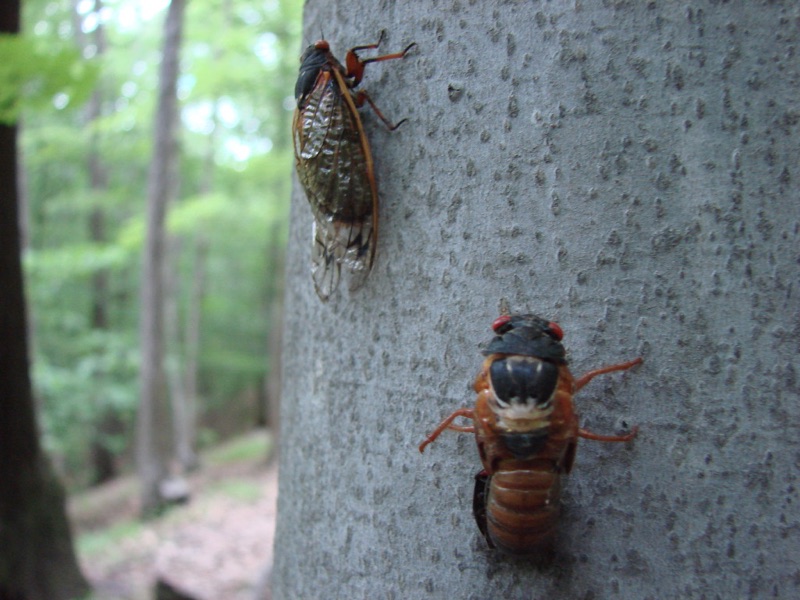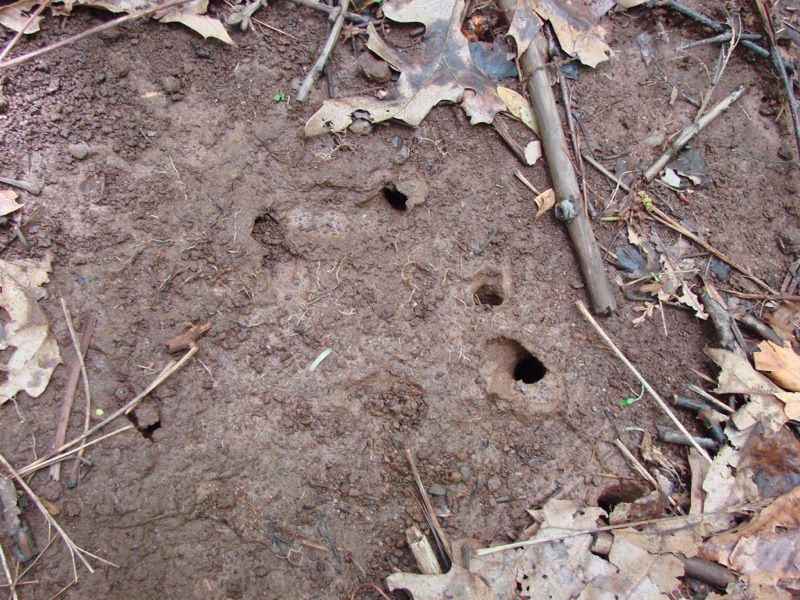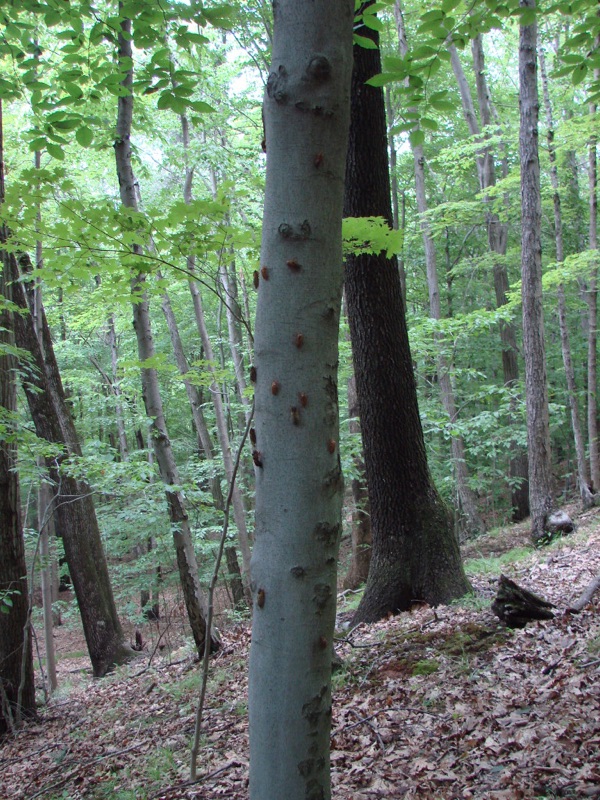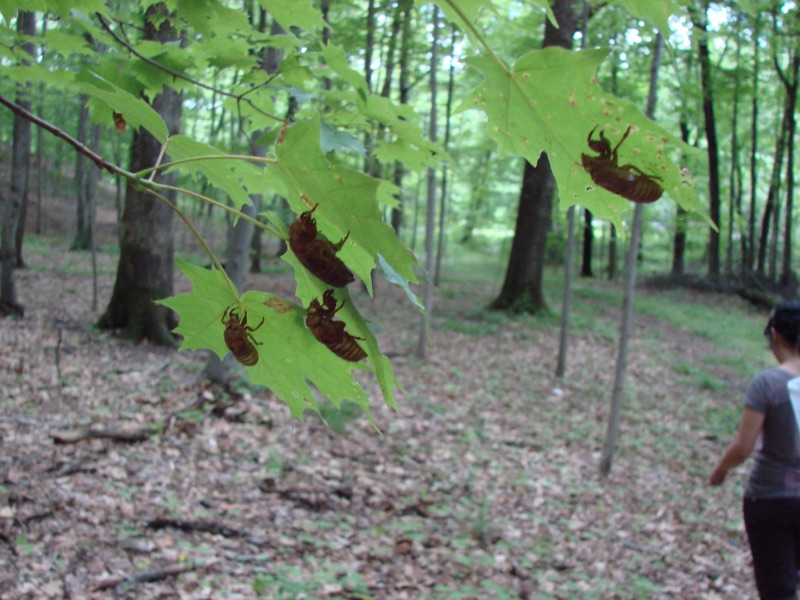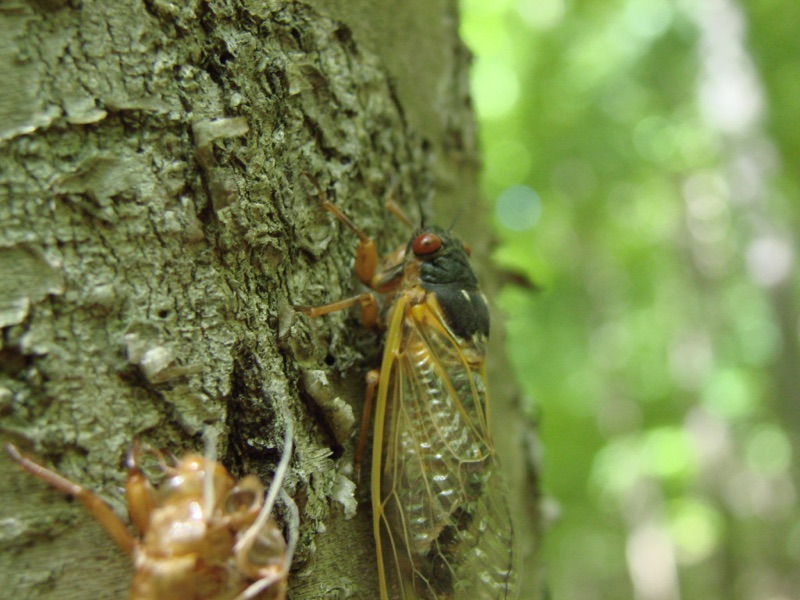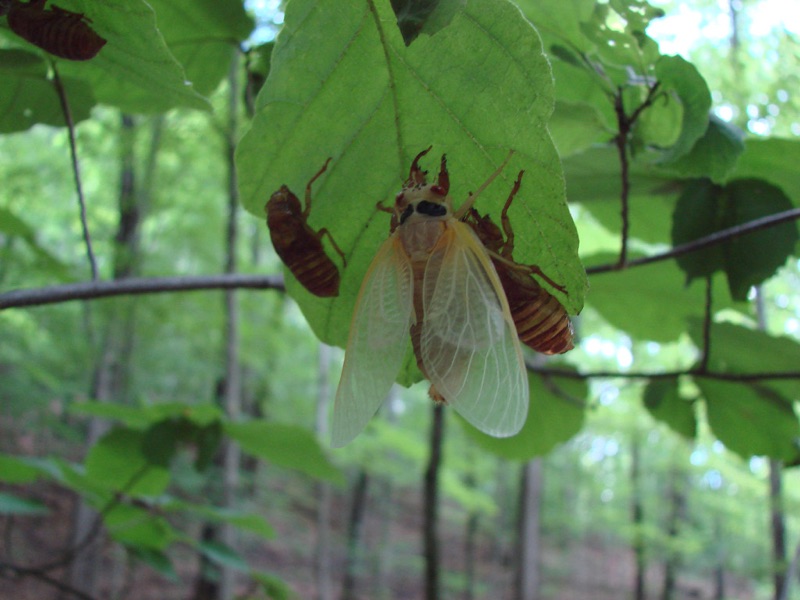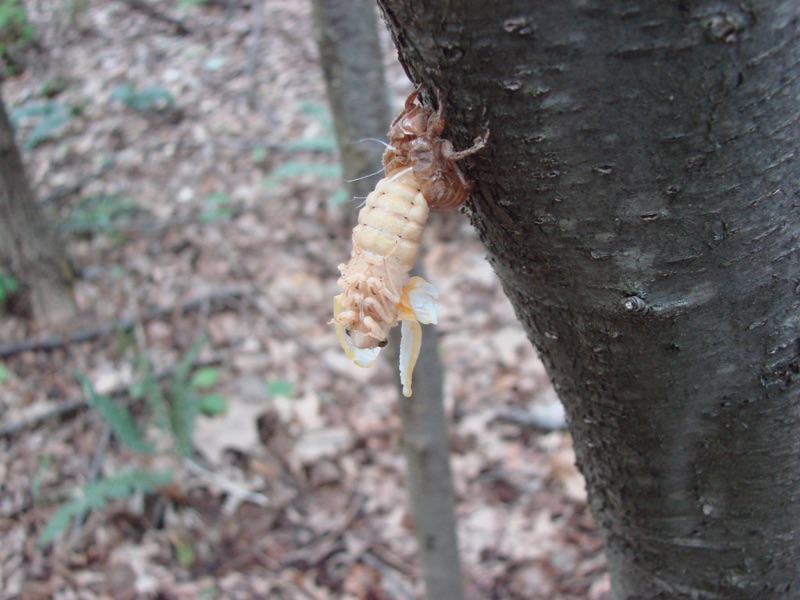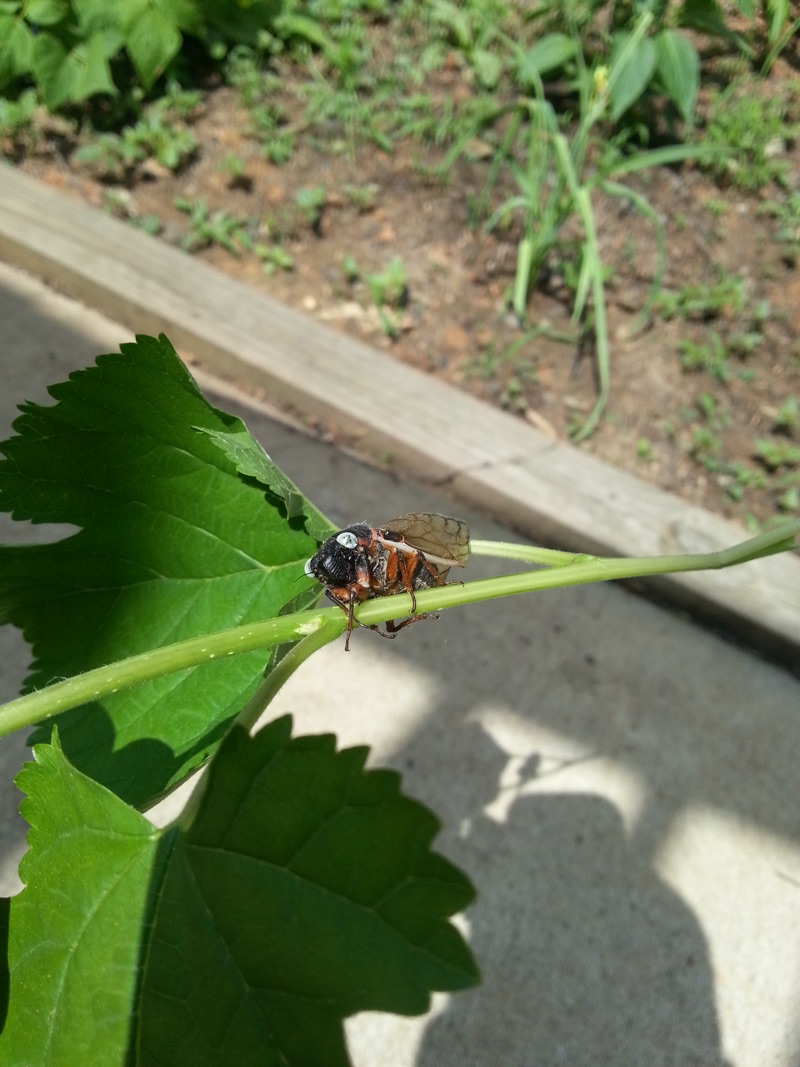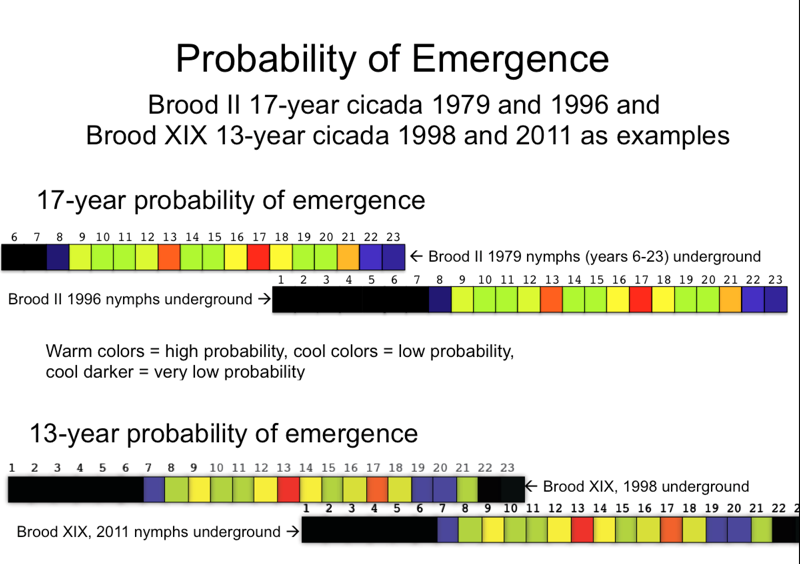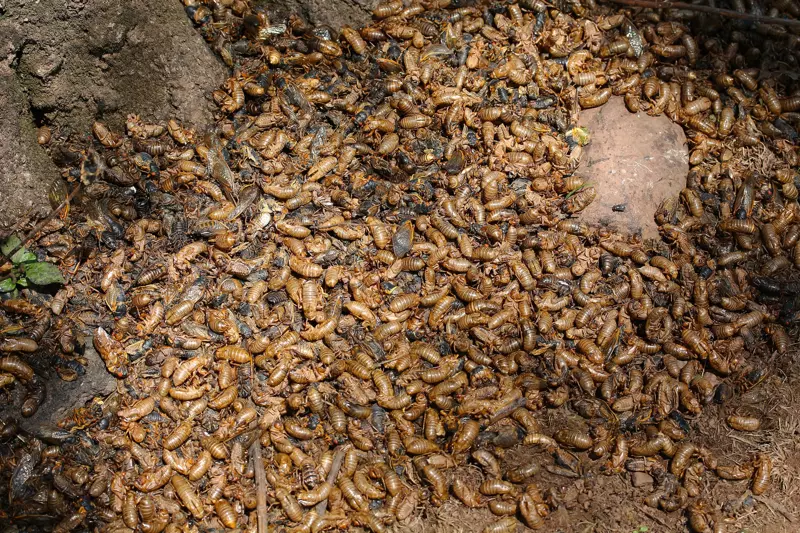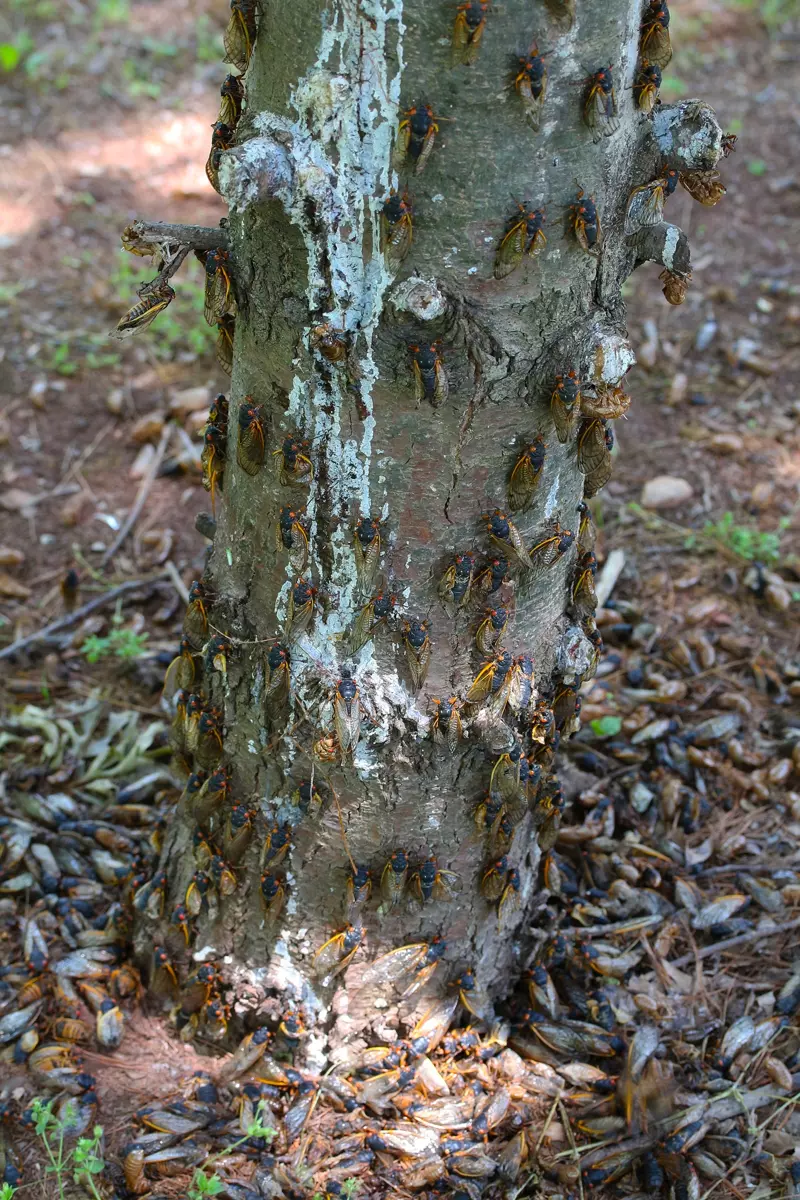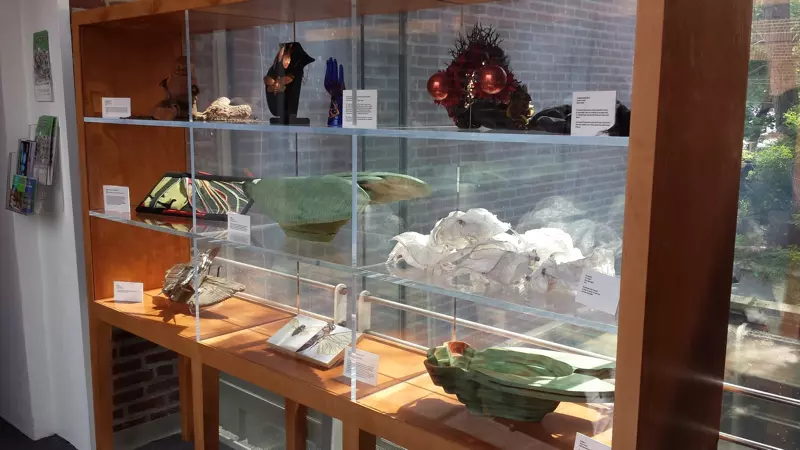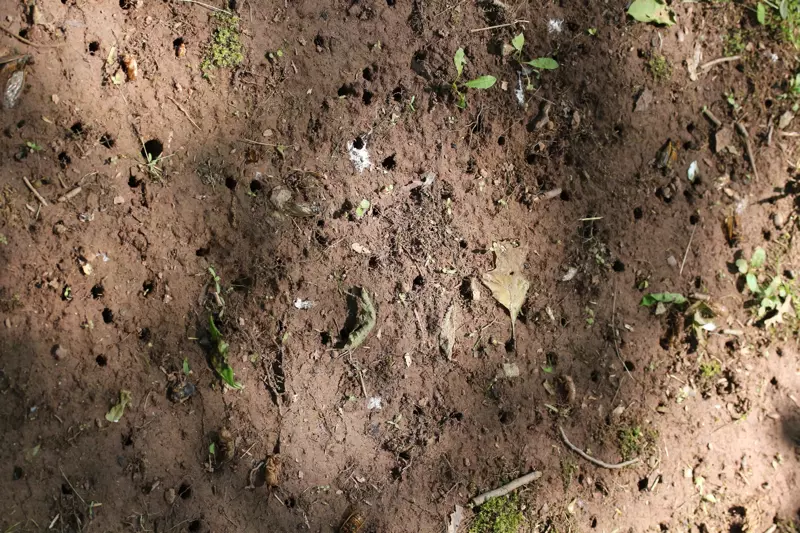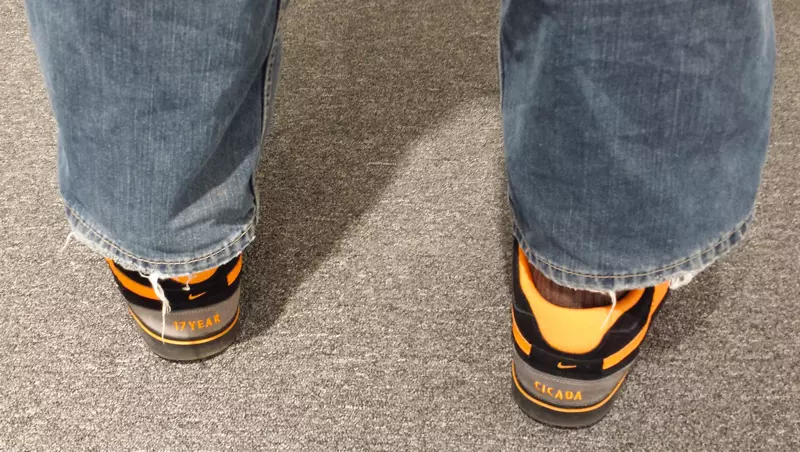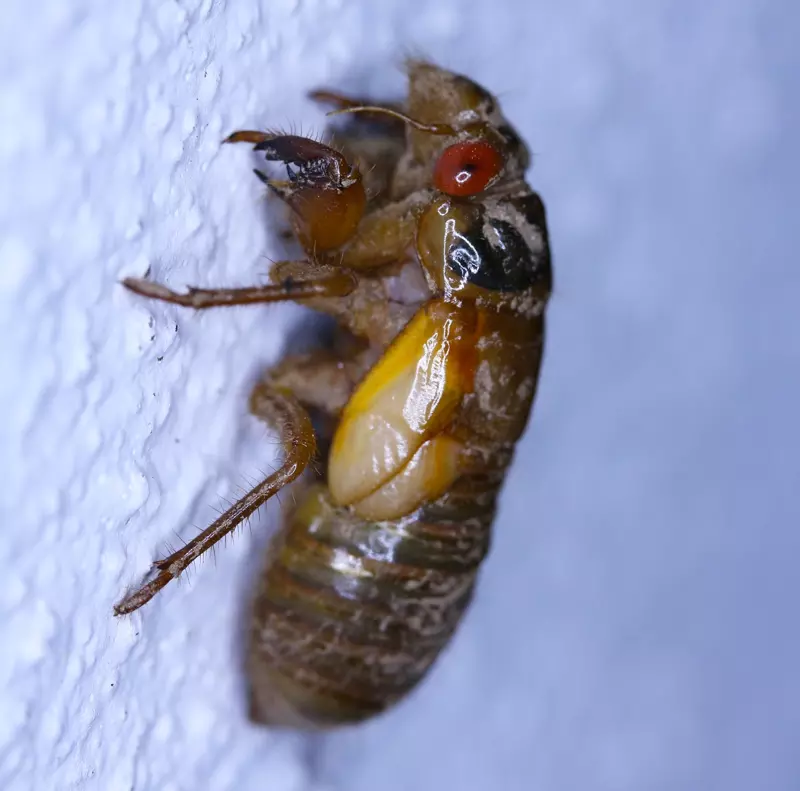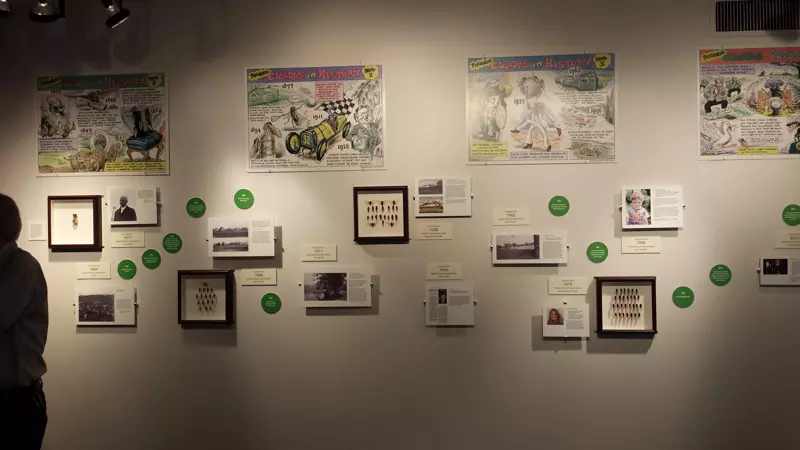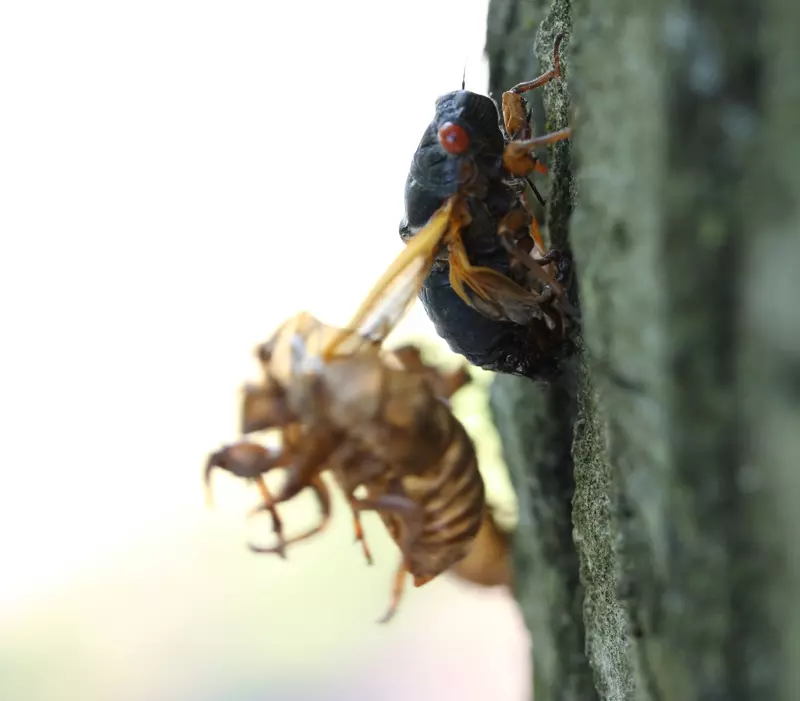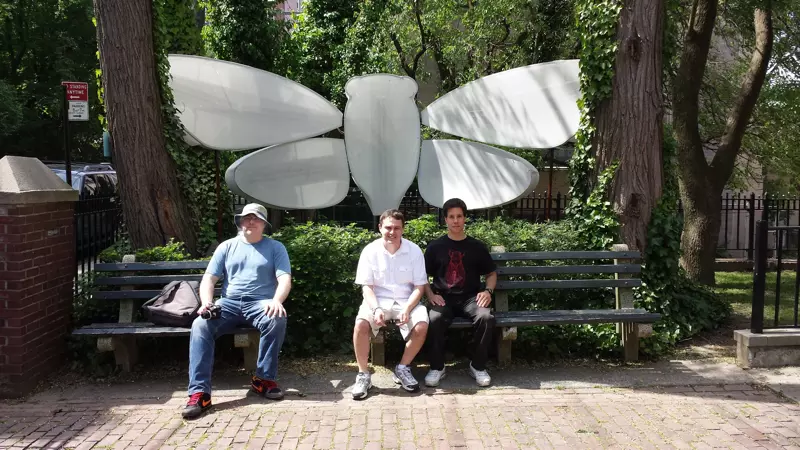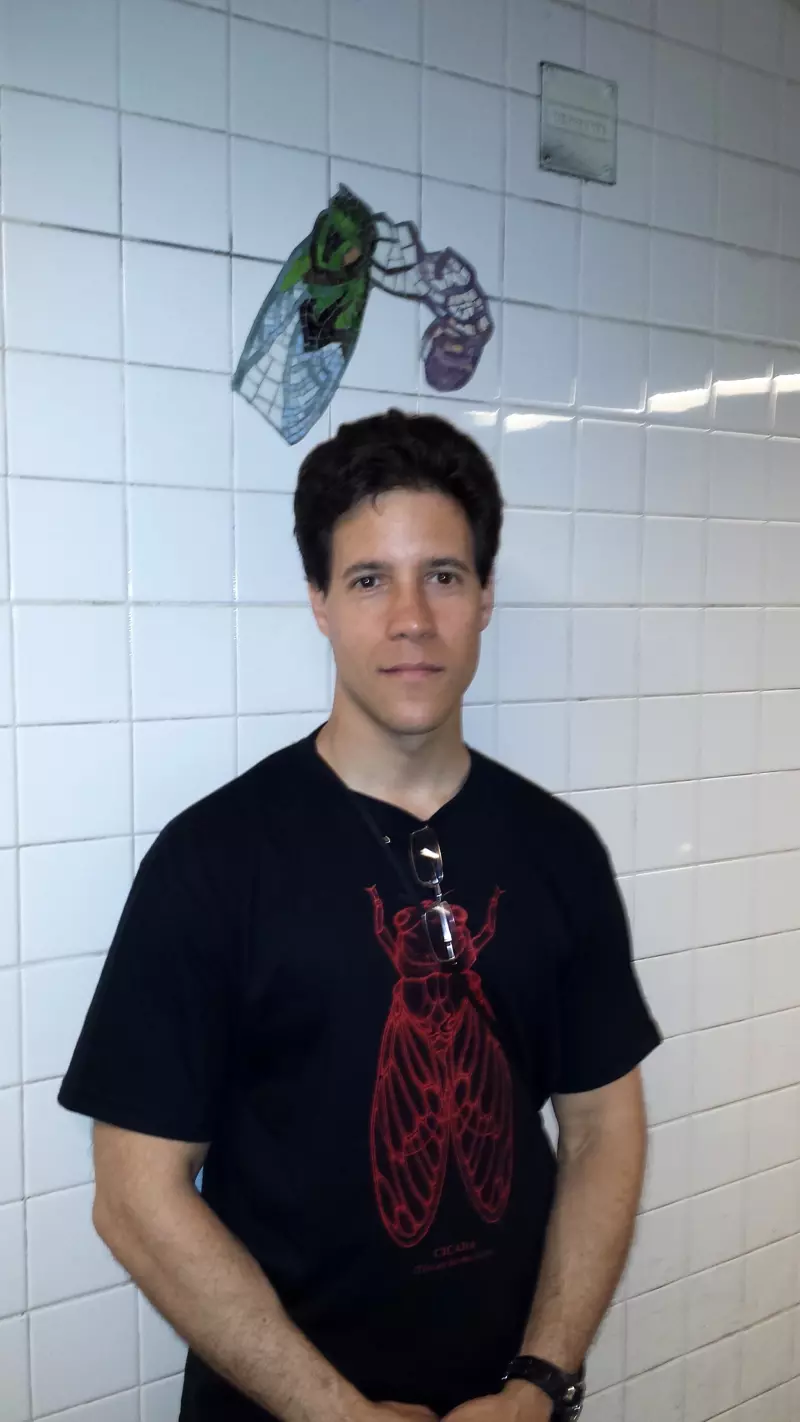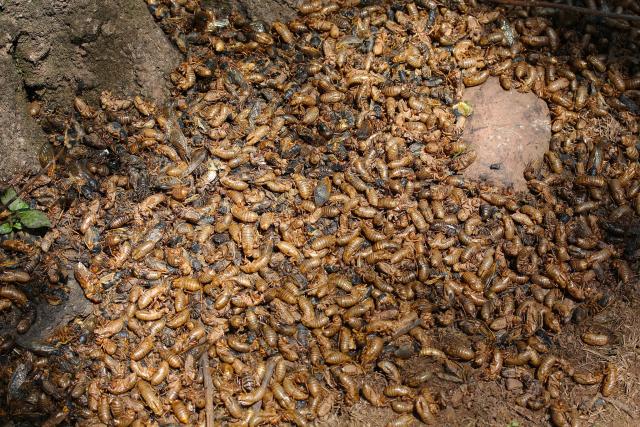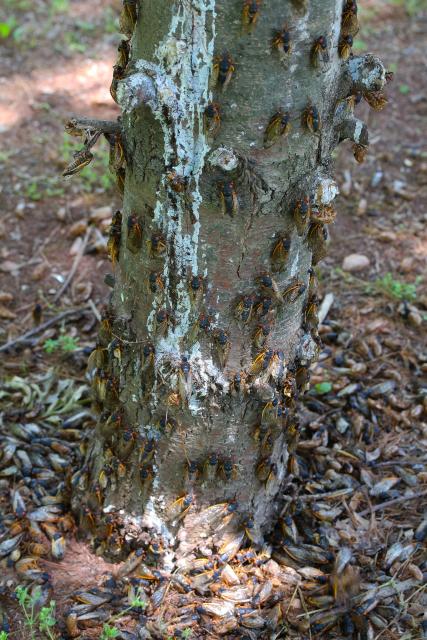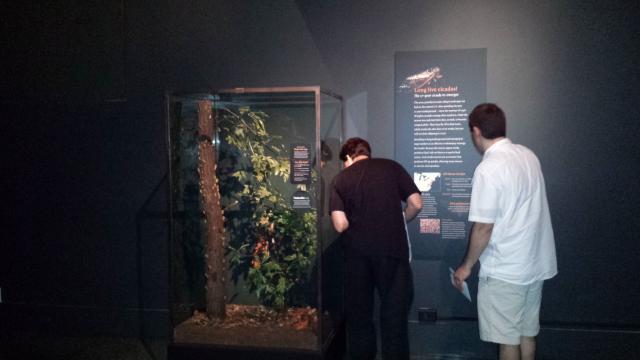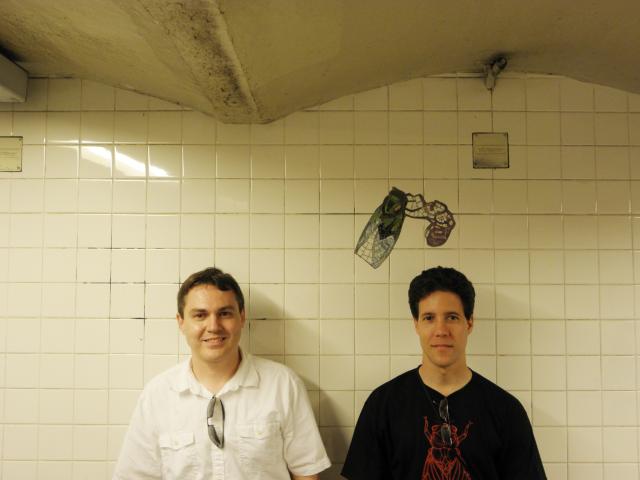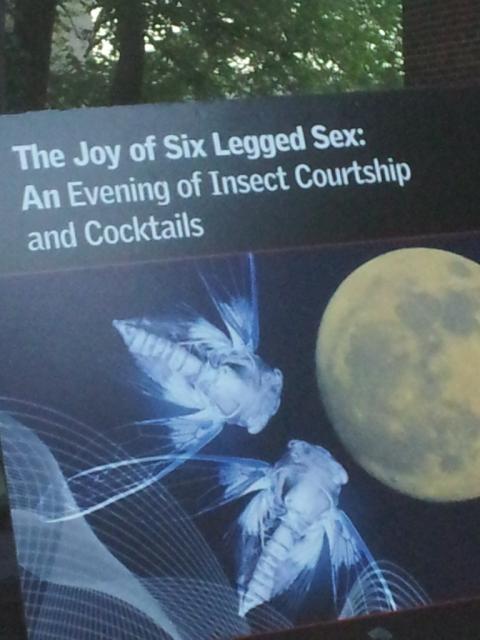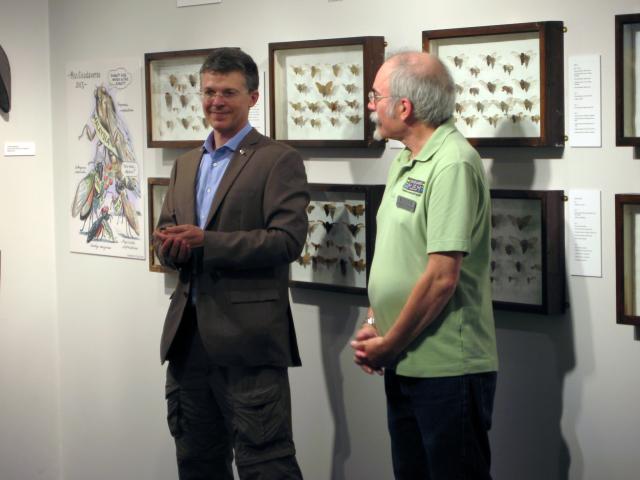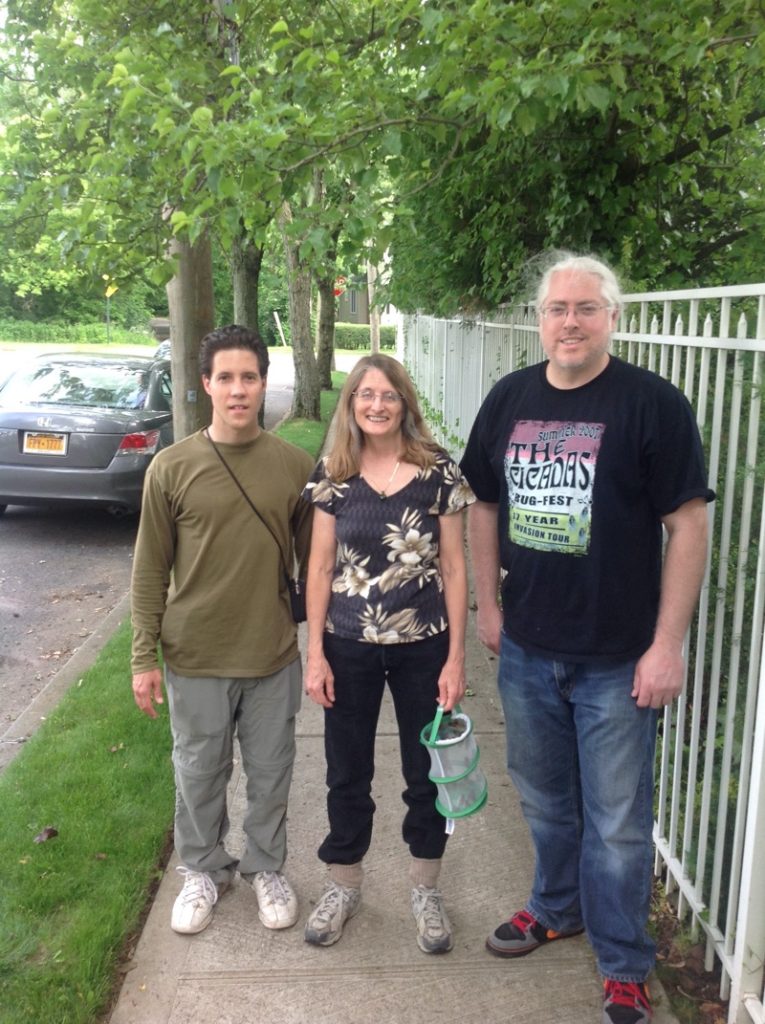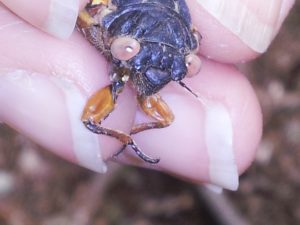June 28th Update
At this point if you haven’t had a periodical cicada emerge in your yard/neighborhood/town, you won’t. The best last chance to see them would be in New York State along rte 9G, parts of 9 and 9J. The more northern, the better. I visited that area last weekend, and found some great spots.
Flagging (when leaves turn brown from cicada egg laying) can be seen in New Jersey and states south of there. Probably a little bit of Connecticut and New York as well.
People are noticing sap dripping from the scars left behind from cicada egg laying.
Next up will be the hatching of the eggs.
Don’t forget to report FLAGGING (brown leaves) sightings to Cicadas @ UCONN (formerly Magicicada.org) so they can add them to their live map. You can report flagging, as well as egg nests, and newly hatched nymphs.
As usual Cicada Mania offers a full line of shirts, glassware, buttons and other souvenirs:
June 17th Update
After visiting central New Jersey and Staten Island over the weekend it’s clear that the emergence in that area is past peak. There is less singing, plenty of ovipositing and some flagging.
Staten Island: Wolfe’s Pond Park and areas along Amboy Road still has enough cicadas to enjoy them, in Staten Island. Bloomingdale Park and High Rock Park are disappointing.
New York State along the Hudson River valley is the place to go to see them at their best. Places like High Falls & Germany Town, and as far north as Stuyvesant.
Rain spoiled a lot of the emergence (for cicada fans). Here is a funny editorial cartoon about the cicadas and frequent rain.
Enjoy some periodical cicada video I uploaded this weekend.
Some new sounds as well.
June 9th Update
We’re at the halfway point.
The 2013 Brood II emergence began somewhere between April, 23rd and May, 1st, in North Carolina and Virginia. Nymphs are still emerging along the Hudson River in NY and in Connecticut.
Here’s a nice gallery of images from Dani Siddle taken in the Malden-on-Hudson area.
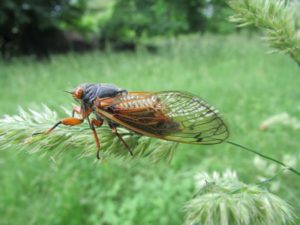
Areas in southern states are no doubt in the clean up phase. Adults have stopped singing, and corpses litter the ground, while the eggs of the next generation are nestled in branches high up in trees.
This is what to expect here on out:
They stink — literally, not figuratively. Yeah, their rotting corpses stink, so you want to clean them up. A rake and shovel work. Some people use vacuums, which are effective, but your vacuums might inherit the smell of the cicadas.
The hatch — in about 6-8 weeks the eggs laid in tree branches will hatch and the 1st instar nymphs will fall to the ground (see “THE ECOLOGY, BEHAVIOR AND EVOLUTION OF PERIODICAL CICADAS” by Kathy S. Williams and Chris Simon). The fall doesn’t hurt them because they have a low terminal velocity. Wear a hat in August. At this point they quickly dig into the soil, and start feeding on roots — small grass roots at first, and larger roots as they get larger. Chances are you won’t even notice them. Sadly, about 98% of them die in the first two years. Just imagine if they all survived — 5000% more cicadas!
The birds will come back — birds and other critters often leave a neighborhood during a cicada emergence. Either they get their fill of eating the cicadas, they can’t hear each other over the over-powering call of the cicadas, or they find it hard to navigate the sky and trees with all the cicadas around. What ever the case, birds and other animals will return to your neighborhood once the cicadas die off. Do not worry.
June 7th Update
Some interesting news stories:
Westfield Residents Learn the Good, the Bad and the Ugly of Cicadas
A podcast with David Rothenberg and John Cooley.
An Invasion of 17-Year-Olds, Loud, Lusty and Six-Legged
June 6th Update
It’s been nearly 2 weeks since my last update, but I’ve been busy — traveling around looking and listening for cicadas. I have literally 100s of photos and videos, and information to update the site with. Lots of info to come.
Ladies: check out these cicada-themed finger nails!
Road-tripers: East Coast Cicadas: (Road Side) Attractions They Couldn’t See In 1996.
Status of the emergence:
– Cicadas in North Carolina, Virginia and Maryland should be post-peak. Singing, mating, laying eggs, but mostly dying. New Jersey is at it’s peak — mostly singing, mating and laying eggs. Pensy, Staten Island and the rest of New York have cicadas in all phases, but they should still have some emerging nymphs to check out. If you want to watch nymphs emerging at this point, Connecticut is the place to go.
Locations I’ve visited and heard or saw cicadas:
New Jersey: Metuchen, Edison, Iselin, Colonia, Woodbridge, Westfield, Fanwood, Summit, Scotch Plains, Clark, Watchung…
Staten Island: most parks in southern SI, like Wolfe’s Pong Park (the cicadas survived Sandy) and Bloomingdale Park. Lots along Drumgoole road.
Locations other people reported:
– Meriden, CT
– Berkeley Heights NJ
– Flat Rock Brood Nature Center www.flatrockbrook.org in NJ
– Lewis Morris Park, Convent Station, Madison and Morris Township in NJ
– Maplewood in Essex County, NJ
– Millburn, NJ (South Mountain Reservation)
– Mountainside, NJ
– Plainfield, NJ
– Upper Montclair, NJ
– West Milford, NJ
– Cornwall-On Hudson, NY
– Red Hook, NY
– Glen Allen, VA
– Manassas Battlefield Park in VA
– Woodbridge VA
See the live map for the lastest 500 locations reported to Magiciada.org.
Where they’re not (sorry):
– DC (they’re south west of DC).
– Most counties in New Jersey south of Middlesex (with some exceptions).
– Most of Pensy
May 24th Update
Cold days ahead until Tuesday for the Brood II cicadas, at least in the northern states. Temperatures below 57 F/14 C will put the insects into a state of torpor, making them easy prey for critters. The rain and wind doesn’t help either. Read: “Adaptation of the Thermal Responses of Insects” by James E. Heath; James L. Hanegan; Peter J. Wilkin; Maxine Shoemaker Heath.
Some positive news: Cicadas @ UCONN has declared a pocket of Brood II in Georgia. Time to update the brood charts!
May 23rd Update

I heard chorusing for the first time in Metuchen, NJ today.
+ Berkeley Heights, NJ (thx Lucinda)
+ Finneytown Ohio (thx Roy) (technically not Brood II)
A video of a cicada undergoing ecdysis (emerging from its nymphal skin (exuvia)), from Rachel in Charlottesville, Va:
A video of The New Jersey Cicada Takeover in Summit NJ from Jason:
Here’s an adult cicada in Westfield NJ:
@cicadamania cicadas in Westfield, New Jersey twitter.com/DryopoidDarlin…
— Crystal Maier (@DryopoidDarling) May 23, 2013
Update for May 22nd
+ Upper Montclair NJ (thx Eryn)
Today I found a white eyed male Magicicada septendecim in Metuchen NJ. Here is a video. White eyed periodical cicadas are relatively rare.
Update for May 21st
The cicadas are chorusing in Charlottesville VA. Here’s a video of their chorus. (thx Rachel)
According to Henryk J. Behnke of the Staten Island Museum: “Finally, the temperature is right and the first, small groups of hundreds of 17-year cicadas are emerging on Staten Island’s South Shore.”
Jason sent us this YouTube video of teneral (soft, white, newly emerged) adults in Summit NJ:
And this video of adult cicadas:
Update for May 19th
More locations:
Guilford, CT (thx Justin)
Chase City and Farmville, VA (thx Nathan)
Manassas, VA (thx Camillia)
Summit, NJ (see a video of a lone nymph crawling around):
See where cicada researchers Satoshi Kakishima and Jin Yoshimura have located cicadas: https://cicadas.uconn.edu.
Update for May 18th
Cicadas are starting to emerge throughout New Jersey. Westfield, Iselin and Metuchen are visually confirmed. I will assume that they have started to emerge in Staten Island as well because of the relative proximity of Staten Island and Jersey.
Cicadas have started chorusing in North Garden, VA.
Visual confirmation of the emergence in:
Westfield, NJ
Metuchen, NJ
Iselin, NJ
Fredricksburg, VA
Lake Ridge, VA
Yadkin County, NC
Some new galleries of photos:
- Photos of Brood II Magicicada cicadas from Westfield, NJ
- Brood II cicada photos from Front Royal, Va
- Photos of a Brood II Magicicada from Madison, NC
- Brood II cicada photos from Iselin, NJ
- Flickr: 2013 Brood II Cicadas, gallery 2
- Flickr: 2013 Brood II Cicadas
Update (5/16):
Jim Reported in with photos of an adult cicada in Westfield NJ! the first NJ sighting I’ve seen.
The emergence in Virginia continues to be strong.
Louisa County VA
Rhoadesville VA (Orange County)
Springfield VA
Update (5/15): Randy from Rhoadsville VA said “Today was 85 and its still 74 at 11PM. WOW! The emergence is incredible. There are nymphs everywhere and in various stages from molting”.
On the Facebook Cicada Mania page, Clarla said “The wooded areas around my house are “boiling” and you can hear the larvae digging their way out. LOTS of molting nymphs all over my entrance”.
Update (5/14): cicadas have emerged in many locations in Virgina, including:
Brentsville, VA
Calvert County, VA
Charlottesville, VA
Doylesville, VA
Kinderhook, VA
Martinsville, VA
Stafford County, VA
Stanardsville, VA
A gallery of Brood II cicadas on Flickr!
Update (5/9): cicadas have emerged in North Carolina, Virgina (see a photo) and Maryland (read a tweet) so far. Nymphs are active in New Jersey according to Magicicada and my sister’s chihuahua:

Update (5/2): cicadas have emerged in Guilford County and Stokes County North Carolina.
May 1st:
Over on the Entomology-Cicadidae cicada group (rip) a gentleman named Tommy Joseph has posted photos of periodical cicadas which have emerged this week in Greensboro, North Carolina This makes sense as North Carolina is the southern-most state with a Brood II population, and southern states warm up before northern states.
There are also plenty of sightings (mostly nymphs, but some adults) on the Cicadas @ UCONN map. Don’t forget to post your sighting there.

The emergence will proceed slowly at first, starting with the southern-most states.
And something amusing for the kids:

Of course it wouldn’t be as special if they did emerge every year.

 If you want to see and hear the Brood II cicadas, play hookey this week, and head on up the Hudson Valley in New York State. DO IT! It’s your last chance until 2030 (unless you want to see Brood III and XXII next year).
If you want to see and hear the Brood II cicadas, play hookey this week, and head on up the Hudson Valley in New York State. DO IT! It’s your last chance until 2030 (unless you want to see Brood III and XXII next year). 